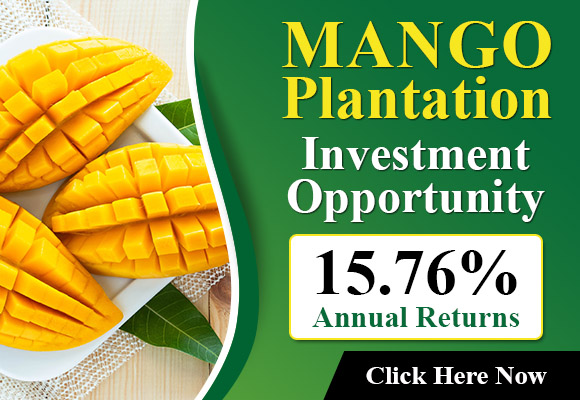The vibe on the second day of Asia Fruit Logistica was friendly and pleasant. It wasn’t as busy as the first day, but the majority of exhibitors were positive about the quality of conversations they had with potential buyers.
Europe sees potential to expand exports to Asia
European exhibitors are optimistic about the export outlook to the Asian continent. French apple growers see lots of potential as a result of good quality. They are hopeful last season’s Red Sea delays won’t get in the way this year and their key markets include Vietnam, Taiwan, Hong Kong, China, Singapore, and Cambodia. Dutch apple and pear growers have been working on developing specific varieties that are suited for the Asian market. They expect a boost in exports now that the Chinese market has opened for apples and pears from the Netherlands. Asia is also a key market for onions from the Netherlands, but they will have to compete with Chinese onions that saw a good harvest this season. Belgian top fruit growers are looking to expand in Asia with the first containers going to Vietnam and Thailand this year. Vegetables from Belgium make their way over to Hong Kong and many Southeast Asian markets. Out of the United Kingdom, a berry grower shared how their exports to Asia and the Middle East are increasing.
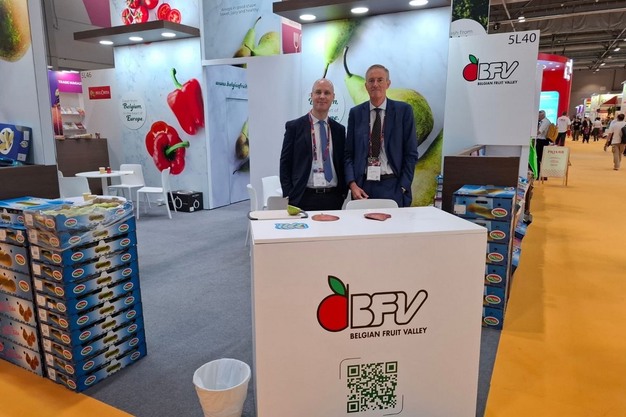 © Nick Peters | FreshPlaza.com
© Nick Peters | FreshPlaza.com
Thomas Simillion and Marc Evrard of Belgian Fruit Valley.
 © Nick Peters | FreshPlaza.com
© Nick Peters | FreshPlaza.com
Didier Lepoutre and Laurent De Smedt van BelOrta.
Taiwan is key market for potatoes from North America
In North America, Washington apple growers are just getting started on another big crop. “We have been exporting to Asia for decades, but with apple production in the U.S. and globally being bigger than ever, competition has increased,” a representative from Washington Apples said. U.S. potato harvest is underway, and growers are happy with this year’s quality. They see great potential in Taiwan and are excited to develop that specific market. Pears, citrus, and berries are other key commodities exported from the U.S. to Asia.
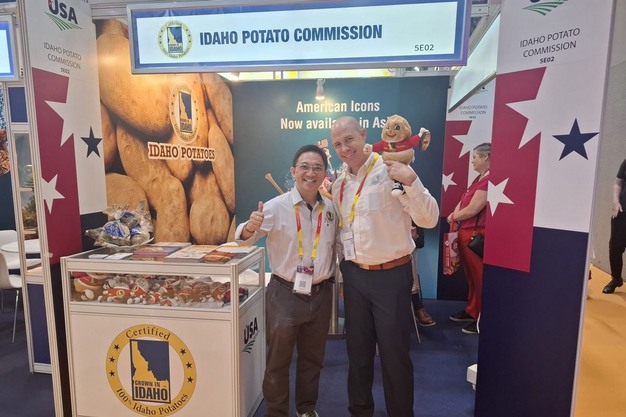 © Nick Peters | FreshPlaza.com
© Nick Peters | FreshPlaza.com
Kenneth Wee and Ross Johnson with the Idaho Potato Commission.
Production growth in China’s Yunnan region
While China’s domestic fruit production is growing at a rapid pace, several fruit varieties from the southern part of the country faced harvest delays due to a cold spring. The first batch of lemons has hit the market with larger export volumes expected to commence in December. China is expecting to compete heavily with lemons that are imported from South Africa. Blueberries from Yunnan are experiencing a boom this year. Yields have multiplied in recent years and as a result of shorter transportation times and improved quality standards, Yunnan blueberries have gained popularity in the domestic market. The same holds true for avocados.
Fifteen companies from Thailand are showing a rich variety of products, including exotic fruits and byproducts. Overall, the Thai exhibitors reported a successful show as their targeted buyers from China, Europe, and North America were strongly present. Out of Japan, exporters show beautiful and sweet seedless grapes that they hope to export to Europe. From Vietnam, about 25 exporters were present and showed their top export fruits, including dragon fruit, mango, coconut, longan, durian, melon, pomelo, banana, rambutan, seedless limes, pineapples, and custard apples. Vietnam’s green-skinned Elephant mango is exported to premium markets like Australia and the U.S. Following these successful shipments, demand for the mango is also growing in China, Hong Kong, Thailand, and Malaysia. A new Panama disease – resistant banana variety from Vietnam is gaining interest in Japan, China, Singapore, and South Korea.
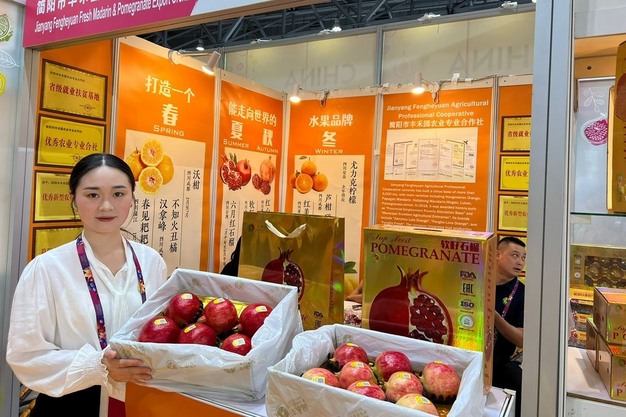 © Ning Fan | FreshPlaza.com
© Ning Fan | FreshPlaza.com
Ren Chen at Jianyang Fengheyuan.
A different season for Chilean cherries
In South America, Chile is gearing up for a new cherry season. After last year’s record production year and logistical challenges, the sector has taken measures to mitigate those problems. “The goal is to balance volumes, improve sizing, increase sugar levels, and ensure higher quality fruit.” For Peru, there are good opportunities to focus on blueberry exports to Asia. Blueberry consumption in China is growing every year and while the country’s domestic production is high, Chinese preference for high-quality fruit is driving interest in blueberries from Peru. “There is no reason for China not to follow the path of Europe and the United States,” one exporter said.
West Africa is absent
As described in yesterday’s article, Northern Africa and South Africa are well represented in Hong Kong. East Africa is represented by the pavilions of Tanzania and Kenya. Exporters of both countries primarily offer avocados and hope to penetrate the Chinese market. West Africa on the other hand is totally absent from the show. China’s expectations of grapes from South Africa will be high this upcoming season as the quality of local grapes in Asia is high this year and so is the quality of table grape crops from North America and Australia. Through the grapevine, show attendees have heard China’s grape imports may decrease as a result of a decline in the economy.
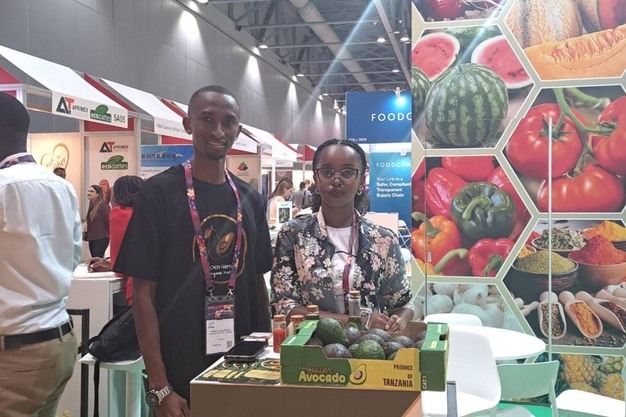 © Youness Bensaid | FreshPlaza.com
© Youness Bensaid | FreshPlaza.com
Jofrey Ombeni and Irene Undiri from Onocado Farm, Tanzania.
Challenges for Australian table grapes
Australian exporters report they had a challenging grape season as weather conditions resulted in a lot of fruit entering the market at the same time. With input costs increasing, returns for growers are suffering.
Source: The Plantations International Agroforestry Group of Companies
